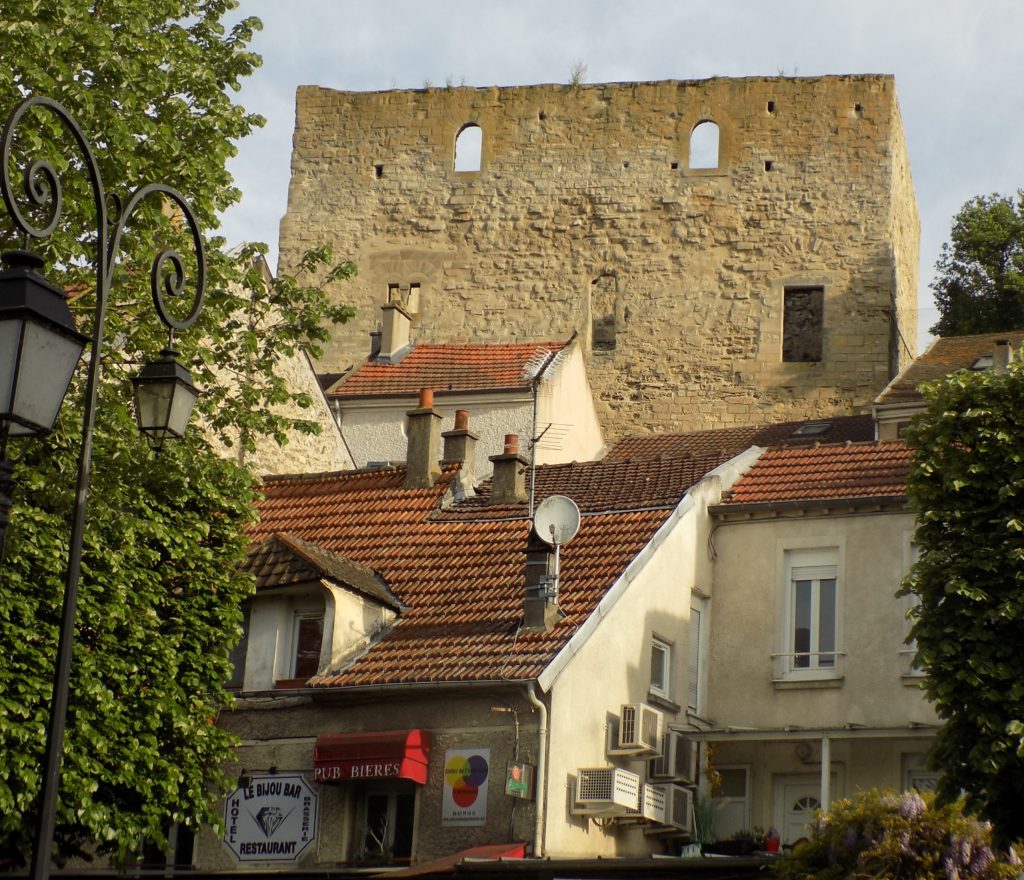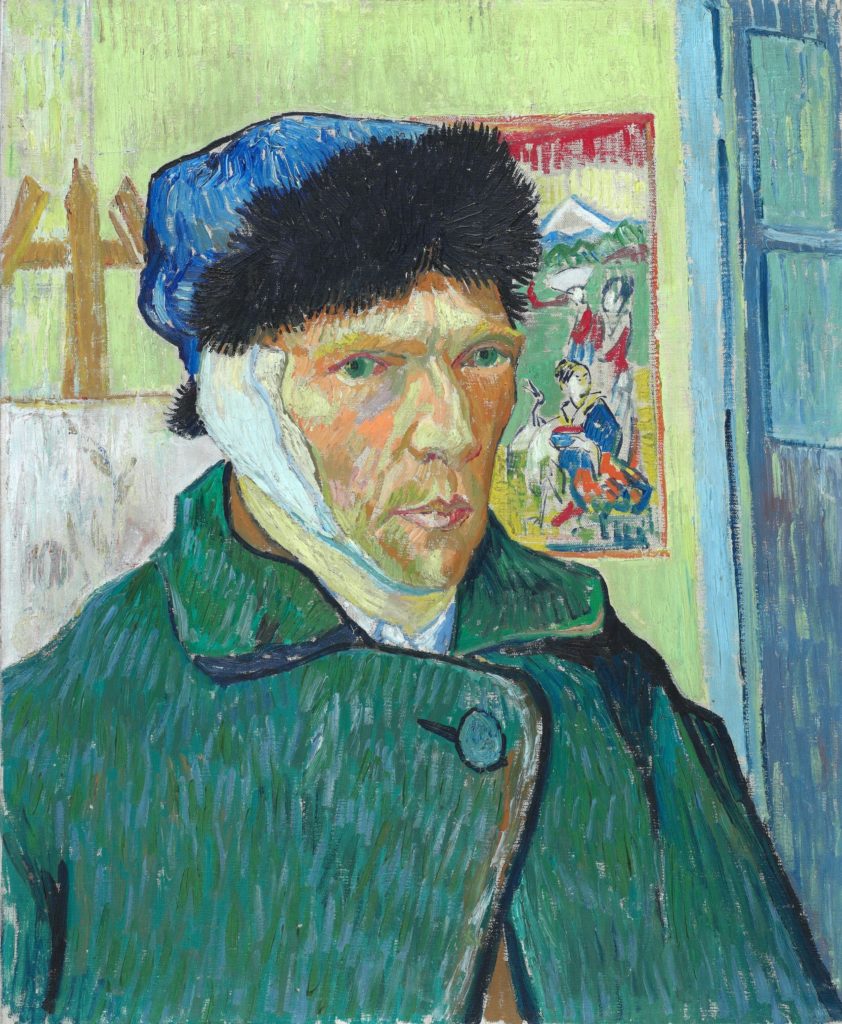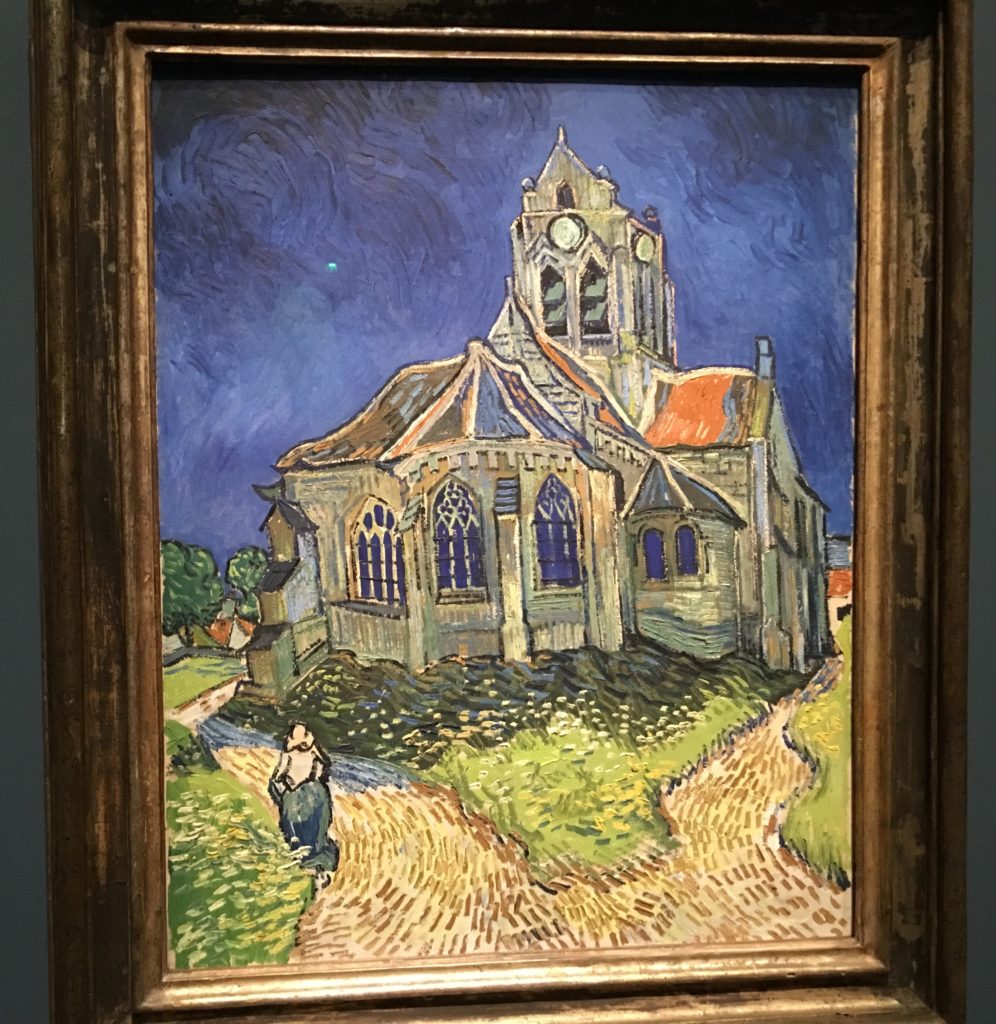One advantage of taking a river cruise (or any cruise for that matter) is that for the duration of the trip, you unpack your bags once. You can go to sleep in one place and awake in another. Thus it was that we boarded the ship in Paris Wednesday night and woke up in Conflans-Sainte-Honorine Thursday morning.
I’ll have more to write about Conflans-Sainte-Honorine and this tower a bit later. But first, this:
As would become customary, the group would be divided for the day’s two scheduled excursions. Half of us would travel to Auvers-sur-Oise (hereafter the shorthand Auvers) in the morning, return to the ship for lunch, and then set out for Château de la Roche-Guyon in the afternoon and half would visit those sites in reverse – the choice was ours. Although the château holds an important place in the history of the allied assault on Normandy that began on 6 June 1944, Patricia and I opted to be with the group that visited Auvers first.
With eyes that watch the world and can’t forget.
Those of you who are familiar with the artist’s biography or who simply might have seen the recent animated film Loving Vincent without any foreknowledge, know why Auvers was one of our excursions. This small newspaper item answers the question for those who do not:
You probably get the gist even without the translation but in English this would read, “Sunday, 27 July, van Gogh, a 37-year-old Dutch artist, painter staying in Auvers, shot himself in the fields and was only wounded. He returned to his room where he died two days later.”
Looking back with the knowledge and perspective of the 21st century, we might describe Vincent van Gogh as suffering from bipolar disorder. Although some of his symptoms might have appeared as early as 1880 when Vincent was 27, it’s possible that if he did, indeed, commit suicide, it was during a depressive episode. Living at home his behavior so concerned Vincent’s father he considered having him committed to an asylum at Geel even then. Over the ensuing six or seven years there were other illnesses, rifts with teachers, and even his brother Theo. There were also bouts of borderline alcoholism. Certainly, by the last 18 months of his life the apparently alternating manic and depressive episodes became more frequent and dramatic.
One of those dramas was, of course, the famous “ear incident” in December 1888. Following a reported series of arguments with Paul Gauguin who was visiting him in Arles, van Gogh returned to his room in the Yellow House where, according to at least one account he was assailed by voices and severed his left ear with a razor after which, he bandaged the wound, wrapped the ear in paper, and delivered it to a woman named Gaby who worked as a cleaner at a brothel both he and Gauguin frequented. The next morning a policeman found him unconscious and took him to a hospital where Félix Rey, a young doctor still in training, treated him. Although a number of people including Theo and one Doctor Gachet asserted later that Vincent had only cut off the earlobe, recently discovered contemporaneous notes by Rey included drawings showing that van Gogh had cut off the whole of his left ear.
[Self-portrait with Bandaged Ear from Wikipedia – Public Domain.]
After his initial recovery, he spent the following month between hospital and home, suffering from hallucinations and delusions of poisoning. In March, the police closed his house after a petition by 30 townspeople described him as “le fou roux” (the redheaded madman) to have him incarcerated or compulsorily committed to an asylum.
By May 1889 Vincent had himself voluntarily admitted to the asylum in Saint-Rémy-de-Provence, where he would remain for a year. He had moved to Arles in February 1888 and in the 15 months before his self-commitment, he is said to have completed 200 oil paintings, and more than 100 drawings and watercolors. And he was no less prolific in Saint-Paul Saint-Remy where he produced 142 paintings including Starry Night (not to be confused with Starry Night over the Rhone in Orsay) and Irises. The list of his work while confined is astonishing and impressive.
A change of scene.
Theo van Gogh, Vincent’s younger brother, was working with some success as an art dealer in Paris when Vincent decided to leave the asylum at Saint-Remy. One of the artists with whom Theo worked and whom he had introduced to Vincent, Camille Pissarro, made the suggestion that Vincent should move to Auvers-sur-Oise to be near the homeopath and amateur painter Doctor Paul Gachet.
Theo agreed thinking that Vincent would get along with Doctor Gachet who was a supporter of the arts and had paintings by many artists Vincent respected. Though Vincent initially thought he would give Gachet a chance to treat him, he wasn’t favorably impressed at their first meeting. He wrote to Theo that Doctor Gachet was, “iller [sic] than I am, it seemed to me, or let’s say just as much.” Perhaps reflecting this initial impression, Vincent began ignoring Gachet’s advice almost immediately by choosing to stay at the Auberge Ravoux instead of the inn recommended by the doctor who lived nearly two kilometers from the Auberge.
Vincent lived the final seven weeks of his life in Auvers and for much of that time seemed to be in good spirits. (Vincent wrote to Theo prolifically and Theo saved more than 600 of his brother’s letters. Vincent didn’t save Theo’s letters with the same determination.)
In those seven weeks, he painted 70 pictures ranging from views of the town
to the surrounding landscape, to portraits including Doctor Gachet and Adeline Ravoux – the 13-year-old daughter of the innkeeper where he stayed. In fact, it’s Adeline’s recollections that provide most of the details of Vincent’s life in Auvers. Adeline appeared to have been fond of Vincent saying he was “calm and gentle in Auvers. He was well respected at our place. We called him familiarly ‘Monsieur Vincent’.” It was also Adeline who provided the principal account of his suicide. But there has arisen recently an alternative theory about Vincent’s death and I’ll look into that in the next post.
Note: In keeping with my 2022-2023 reformation of the blog into shorter entries, backdated to maintain their sequence, any comments on this post might pertain to its new configuration. See the full explanation in the post Conventions and Conversions.




Loved the Vincent van Gogh. Like most people, other than art history majors or aficionados, I have heard the ear story and death by suicide…the background you provided was an eye opener…based on the info you provided, I am in the “non-suicide” camp…
While the pun was clever, I thought I was finally going to get a recounting of your French food exploits..
There will be some writing about food but you’ll have to wait until I get to Honfleur and while there weren’t many days between Auvers and Honfleur, there will be many posts.
?♂️ ?